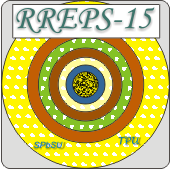Speaker
Vasily Sukharev
(National Research Nuclear University (MEPhI))
Description
A charged particle crossing an interface between two media with different dielectric properties is a source of transition radiation (TR) [1] applied to the detection of super-high energy particles. In our previous paper [2] we investigated the graphene monolayer as the simplest but along with it real example of two-dimensional layer, in order to study TR characteristics. Also, high graphene conductivity could make an important contribution into TR in case of a big number of the layers. In article [2] the problem was solved analytically in a zero approximation with the suggestion that polarization currents are produced directly by the charged particle field. In this work we obtain both analytical and numerical results for a sinusoidal shaped monolayer; the results turn into those for the plane one in the corresponding limiting case. All the results can be applied not only to the graphene, but also to an arbitrary monolayer.
To accomplish the investigation, we compare our results with Computer Simulation Technology modeling (CST), which offers accurate, efficient computational solutions for electromagnetic design and analysis.
1.V.L. Ginzburg, I.M. Frank, ZhETF 16, 15 (1946).
2.V.M. Sukharev et al, J. Phys.: Conf. Ser. 357, 012015 (2012).
Author
Vasily Sukharev
(National Research Nuclear University (MEPhI))
Co-authors
Dr
Alexey Tishchenko
(National Research Nuclear University (MEPhI))
Prof.
Mikhail Strikhanov
(National Research Nuclear University MEPhI)
